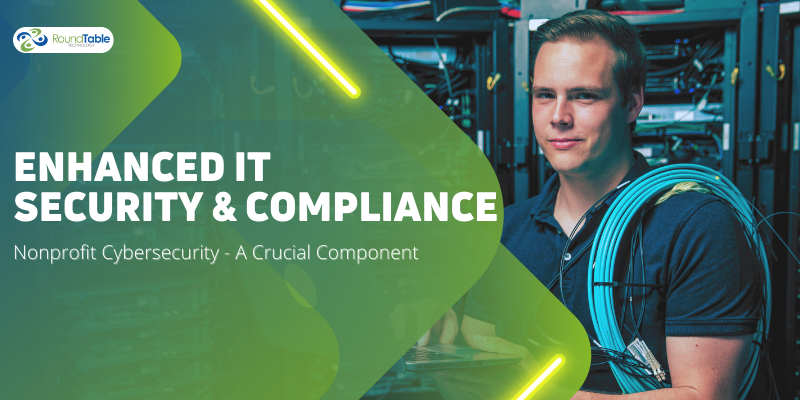Why Data Governance is a Game-Changer for Nonprofits: Key Benefits & Best Practices
Nonprofits rely on data for everything—fundraising, donor relationships, program management, reporting, and compliance. But without a structured...

If you’re a nonprofit leader, you know that getting the most out of limited resources can make or break an organization. With more and more services delivered online, harnessing technology to propel your organization forward is becoming increasingly important—and now it’s possible even on tight budgets.
In this blog post, we will explore how using modern-day technologies like cloud computing can empower nonprofits to save time and money while achieving their goals. We’ll discuss the importance of data security and explain how to best utilize these methods for maximum impact. Read on for a comprehensive guide on leveraging technology for long-term success!
Technology has become an integral part of the nonprofit world. It has enabled nonprofits to be more efficient, reach larger audiences, and make a greater impact in their communities. Technology can help nonprofits increase their reach by allowing them to communicate with larger groups of people around the world.
Technology can also be used to facilitate collaboration between organizations and partners, enabling them to share information quickly and easily, while helping to reduce costs by providing access to powerful software solutions that are usually out of reach for most smaller organizations.
Additionally, technology can help nonprofits collect data so that they can better monitor their progress and understand the needs of their stakeholders. By leveraging data-driven insights, nonprofits can ensure that they are making the best use of resources by targeting the right programs and initiatives. Furthermore, it allows nonprofits to measure impact in a more meaningful way so that they can adjust strategies and tactics as needed.
At the same time, technology is not a silver bullet; it needs to be used responsibly in order for it to truly empower nonprofits. Nonprofits should consider how technology might benefit their operations as well as potential roadblocks that could impede progress, such as lack of funding or technical expertise. It is important for organizations to stay up-to-date on trends and developments in order to remain competitive in a rapidly changing environment.
Nonprofits have much to gain from using technology — if used thoughtfully — but they must also take into consideration potential risks associated with its use before jumping in headfirst. By understanding these factors, nonprofit organizations will be able to maximize their impact while minimizing risk when utilizing technology solutions.
Cloud computing is nothing new, and more and more organizations are switching their tech stacks to be completely in the cloud. Cloud computing allows nonprofits to store and access data from anywhere, anytime and with any device, making it easy for remote staff or volunteers to access important information. The cloud also offers nonprofits the ability to scale their storage needs up or down as needed, so they don’t have to purchase additional hardware or software licenses when they need more capacity.
Additionally, cloud computing services provide nonprofits with a secure environment where their data is stored safely, reducing the risk of data loss due to physical damage or theft. By utilizing cloud services, nonprofit organizations can save money on IT costs since they no longer need to pay for servers, electricity and maintenance fees associated with in-house computing infrastructure.
Finally, cloud computing also provides increased flexibility allowing nonprofits to quickly deploy new applications without having to purchase additional hardware or software licenses. This not only saves time but also reduces other associated costs such as training and installation costs. All in all, by taking advantage of cloud computing services, nonprofit organizations are able to increase efficiency and reduce costs while ensuring their data is kept secure.
If you're using cloud-based Software-as-a-Service applications, but aren't backing them up, see how you might be endangering your data.
While technology can be a boon, nonprofits often face unique challenges when it comes to protecting their networks, data, and communications from malicious actors. They may not have the same resources as larger businesses that can afford top-of-the-line security solutions or experienced IT personnel to maintain them. However, this does not mean that nonprofits need to sacrifice security for convenience. Adequate security controls can be implemented by any organization regardless of size or budget.
When it comes to network security, nonprofits should employ various strategies including firewalls, encryption, and anti-malware solutions. Firewalls are an essential line of defense against unauthorized access and malicious traffic, while encryption ensures sensitive data remains private even if intercepted by a third party. Nonprofits should also invest in anti-malware software to protect against known threats and viruses designed specifically to target vulnerable systems. Additionally, they should regularly patch all system software and applications, making sure they’re up-to-date with the latest security fixes.
For organizations that rely on cloud services for collaboration or file storage, additional measures should be taken to protect data at rest and in transit. Multi-factor authentication is recommended for any authorized users accessing cloud servers from outside the network. Furthermore, all communication between devices and cloud servers should be encrypted end-to-end using secure protocols such as HTTPS or SSH. Finally, an organization should conduct regular vulnerability scans of its cloud infrastructure to check for weaknesses or misconfigurations that could be exploited by attackers.
Overall, nonprofits don’t necessarily need an overly complex or expensive security solution in order to protect their networks and data. With a few simple steps such as using firewalls, encrypting communication channels and investing in anti-malware software – combined with best practices such as multi-factor authentication and regular vulnerability scans – nonprofits can ensure their systems stay safe from cyber threats.

Nonprofits rely on data for everything—fundraising, donor relationships, program management, reporting, and compliance. But without a structured...

Multi-factor authentication is a critical security measure that all nonprofit personnel should be using. This type of authentication requires more...

In today's fast-paced digital world, the importance of IT security and compliance can't be overstated. As organizations, particularly nonprofits,...